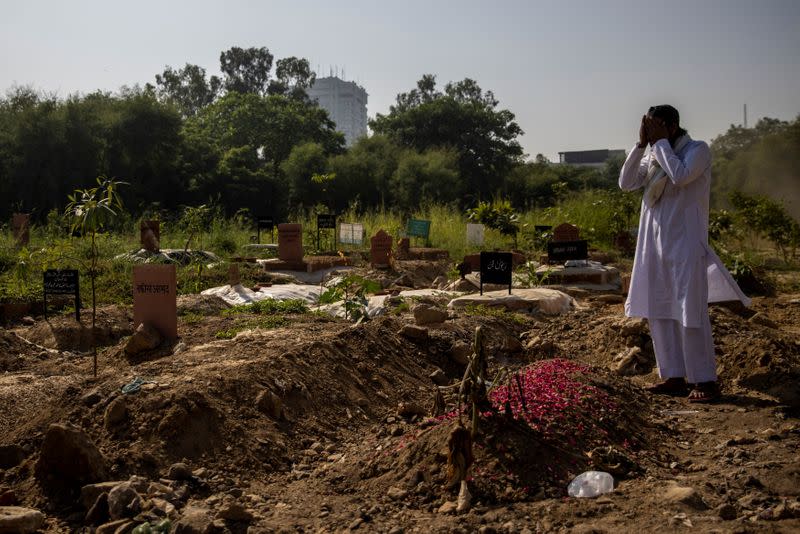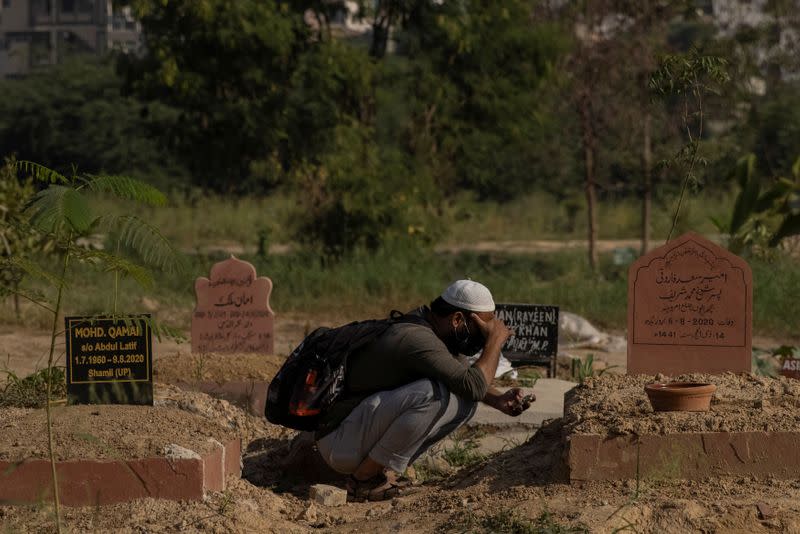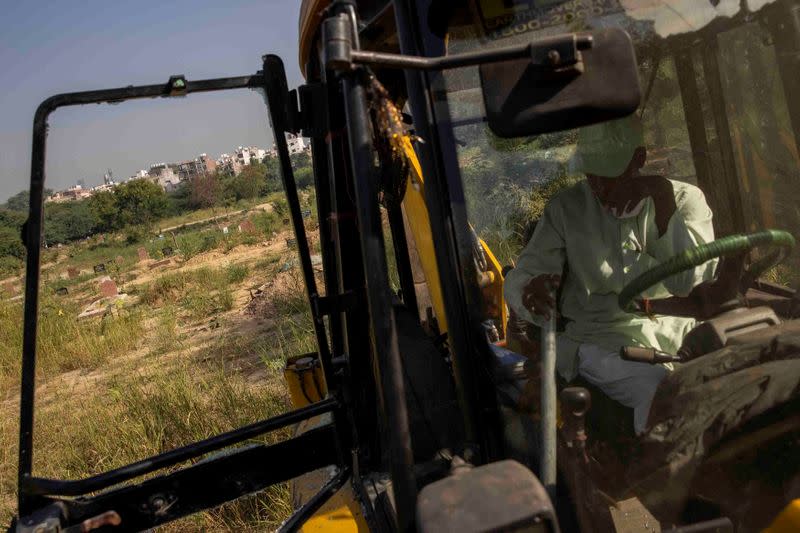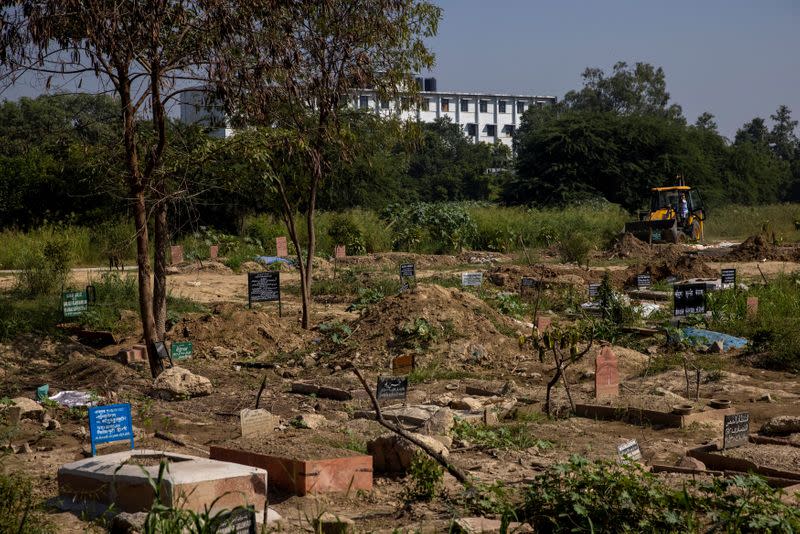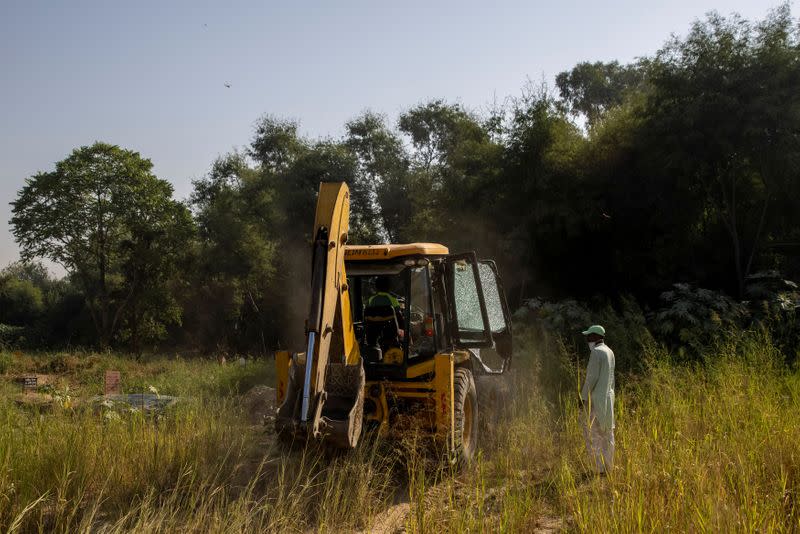Delhi's oldest graveyard clears space to bury coronavirus dead
By Danish Siddiqui
NEW DELHI (Reuters) - Workers were clearing undergrowth from wasteland on Tuesday to add 400 graves to the Indian capital's oldest functioning cemetery beside the ruins of historic city walls, as the death toll from the coronavirus grows.
With more than 100,000 deaths nationwide, India's tally of infections has crossed 6.6 million, but there is little sign of any sustained fall in new daily numbers.
Since its first virus burial in April, the Islamic graveyard of Jadid Qabristan has seen more than 700 funerals on a patch of adjoining wasteground designated for pandemic victims.
"We weren't expecting that we will have to clear more land for the graves," said head gravedigger Mohammad Shameem, a 38-year-old in a pale green traditional tunic, who is the third generation of his family to work in cemeteries.
"But bodies just keep arriving."
A respite in infections has cut virus burials to about four a day, from 10 in the summer, but Shameem said the graveyard, founded in 1924, would soon be at capacity.
"The way things are moving, I think we will clear the last remaining patch of land for graves in the coming months."
Hindus, who make up the majority of India's population of about 1.4 billion, are typically cremated after death, but its estimated 200 million Muslims typically bury their dead.
Like the workers at a nearby crematorium for Hindus, Shameem said he often faced difficult conditions.
"We are doing so much work for the last eight months, but there has been hardly any help from the government, in terms of personal protective equipment," he said.
(Interactive graphic tracking global spread of coronavirus: https://graphics.reuters.com/world-coronavirus-tracker-and-maps)
(Reporting by Danish Siddiqui in New Delhi; Writing by Alasdair Pal; Editing by Clarence Fernandez)

